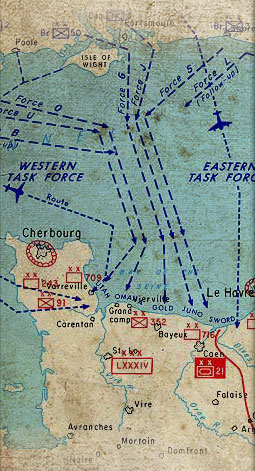
Elements of the 1st Infantry Division and 29th Infantry Division (US) faced the recently formed German 352nd Infantry Division, a mixed group of Russian "volunteers" and teenagers stiffened with a cadre of east front veterans, unusual in the fact that it was one of the few German divisions remaining with a full complement of three regiments albeit at reduced strength; fifty percent of its officers had no combat experience. However, Allied intelligence was unaware until two weeks before the planned invasion that the 100 km stretch of beach originally allocated to be defended by the 716th Infantry Division (static) had been cut into two parts in March, with the 716th moving to the "Caen Zone", and the 352nd taking over the "Bayeux Zone", thus doubling the complement of defenders.
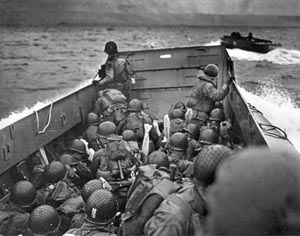 Omaha was also the most heavily fortified beach, with high bluffs defended by funneled mortars, machine guns, and artillery, and the pre-landing aerial and naval bombardment of the bunkers proved to be ineffective. Difficulties in navigation caused the majority of landings to drift eastwards, missing their assigned sectors and the initial assault waves of tanks, infantry and engineers took heavy casualties.
Omaha was also the most heavily fortified beach, with high bluffs defended by funneled mortars, machine guns, and artillery, and the pre-landing aerial and naval bombardment of the bunkers proved to be ineffective. Difficulties in navigation caused the majority of landings to drift eastwards, missing their assigned sectors and the initial assault waves of tanks, infantry and engineers took heavy casualties.
Of the 16 tanks that landed upon the shores of Omaha Beach only 2 survived the landing. The official record stated that "within 10 minutes of the ramps being lowered, [the leading] company had become inert, leaderless and almost incapable of action. Every officer and sergeant had been killed or wounded [...] It had become a struggle for survival and rescue".
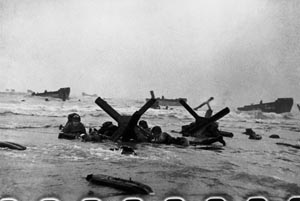 Only a few gaps were blown in the beach obstacles, resulting in problems for subsequent landings. The heavily defended draws, the only vehicular routes off the beach, could not be taken and two hours after the first assault the beach was closed for all but infantry landings. Commanders (including General Omar Bradley) considered abandoning the beachhead, but small units of infantry, often forming ad hoc groups, supported by naval artillery and the surviving tanks, eventually infiltrated the coastal defenses by scaling the bluffs between strongpoints.
Only a few gaps were blown in the beach obstacles, resulting in problems for subsequent landings. The heavily defended draws, the only vehicular routes off the beach, could not be taken and two hours after the first assault the beach was closed for all but infantry landings. Commanders (including General Omar Bradley) considered abandoning the beachhead, but small units of infantry, often forming ad hoc groups, supported by naval artillery and the surviving tanks, eventually infiltrated the coastal defenses by scaling the bluffs between strongpoints.
Further infantry landings were able to exploit the initial penetrations and by the end of the day two isolated footholds had been established. American casualties at Omaha on D-Day numbered around 5,000 out of 50,000 men, most in the first few hours, while the Germans suffered 1,200 killed, wounded or missing. The tenuous beachhead was expanded over the following days, and the original D-Day objectives were accomplished by D-Day+3.
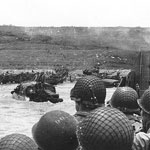 |
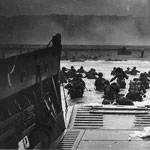 |
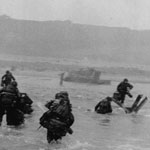 |
|---|






